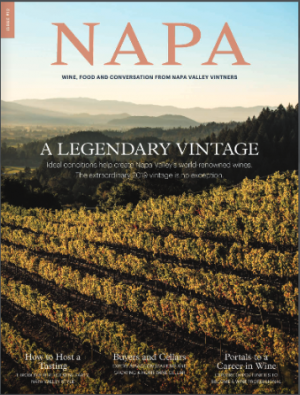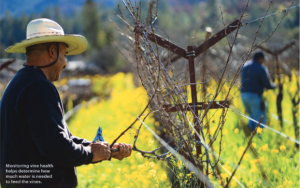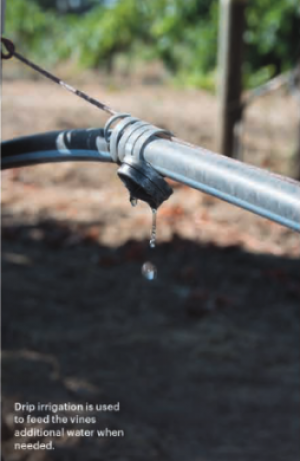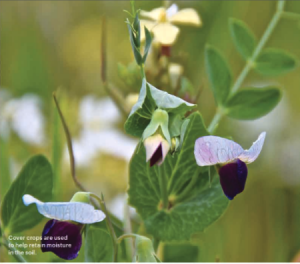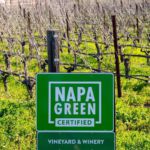Wise Water Use
- JESS LANDER | NapaValley.WINE |
- December 13, 2021
IN DROUGHT CONDITIONS, CREATIVE WINEMAKERS APPLY SUSTAINABLE SOLUTIONS TO THE PRODUCTION OF AWARD-WINNING WINES
In agriculture, water is considered a precious resource, but in the face of another California drought, Napa Valley winemakers are finding creative and sustainable ways to adapt and continue to craft premium, concentrated wines with less of it.
Most recently, California experienced a drought between the years 2012 and 2016 and as of 2020 finds itself in a state of drought once again. But while these conditions may not be ideal, they’re far from a death sentence to vintners who discovered long ago that a lack of water can actually aid in the production of fine wines.
Unlike other crops, vines can not only survive, but thrive in drought conditions. In fact, until the creation of drip irrigation-a system that feeds the vines additional water when needed-vineyards in Napa Valley were historically dry-farmed, meaning the only water they received was from the year’s rainfall.
While most wineries now take advantage of irrigation technology, they are still typically limiting their water usage, whether it’s a drought year or not. Nick Bleecher, general manager and winemaker at Calistoga’s Jericho Canyon Vineyard, says, “We’re trying to use as little water as possible.”
When water isn’t readily available, the vines stress, growing roots deep down into the soils in search of a drink. As a result, the grapes in the clusters are smaller and yields are lower, but this isn’t necessarily a bad thing. The smaller yields of the berries from moderately stressed vines are known to create extremely complex and concentrated wines, the kind that bring home top scores and reviews from the industry’s critics.
There is another major benefit to these water-saving practices: sustainability. Members of Napa Green, an organization that serves as a catalyst for growing certified sustainable businesses in the wine industry, have learned to employ specific viticulture practices meant to both mitigate water usage and store more water in the soil. In the end, it’s win-win. They are conserving water for a greener planet and at the same time cultivating high quality wine grapes.
Here are three ways that Napa Green wineries farm sustainably in drought conditions.
IRRIGATION EVALUATIONS
One of the more effective strategies wineries use to conserve water is tracking irrigation usage with devices such as water sensors, soil moisture boxes and pressure readers. These help viticulturalists monitor vine health and determine precisely if, when and how much water the drip irrigation system should feed the vines. Adrienne Uboldi, vineyard and sustainability manager at Markham, says that giving the vines the amount of water they need when they need it “plays a big role in how we can be sustainable.”
Viticulturalists also frequently perform irrigation assessments, which check for common issues, such as excessive or low pressure, clogging, or leaking, all of which can not only waste water but also affect grape quality. “So much of sustainability is awareness, monitoring and maintenance,” says Anna Brittan, executive director of Napa Green.
CARBON FARMING
Another common conservation initiative is “carbon farming.” In simple terms, vintners look for ways to store or “sequester” more water in the soil. Carbon farming enables them to irrigate less during growing season while also improving soil health and increasing the overall resiliency of the vineyard.
“Enhancing soil’s water-holding capacity allows farmers to have more control over the fate of nutrients in the soil,” explains Dr. Miguel Garcia, a soil science expert for the Napa County Resource Conservation District. “Better water and nutrient management allows farmers to better manage vine health and grape quality, which translates into better-quality wine.”
One way to do this is to grow cover crops between the vine rows and mow them to help retain moisture, says Uboldi. She also avoids tilling the soil, which can have negative effects on soil quality.
Kirk Grace, director of California vineyard operations at Stag’s Leap Wine Cellars, uses compost tea, made of compost and water, which is inserted into the drip irrigation system and distributed to the vines.
“The simplest way to describe it is that I am making an electrolyte replacement drink for the vines,” says Grace. “We have a limited amount of irrigation water here, so the compost tea helps to buffer the stress that would be there because we can’t irrigate as much as we’d like to.”
LOOKING FORWARD-AND BACK
In anticipation of increasing drought conditions, wineries are being extra-strategic when they replant vineyards. Vine orientation, rootstock selection and grape variety choice can all play a role in making a vineyard more drought resilient, and some wineries are even planting experimental vineyards to test these different factors and plan for the future.
Yet while they look ahead, some are also taking a page out of the old playbook. The traditional practice of dry-farming is seeing a small resurgence of interest throughout Napa Valley. Tod Mostero, director of viticulture and winemaking for Dominus Estate, purposefully dry-farms the estate’s 137 acres in both Yountville and Oakville. “We dry-farm because we believe it’s the best way for us to grow quality grapes,” he says. “Vines are one of the crops that need the least amount of water.”
Whether the current drought ends sooner or later, the fact is that droughts will always be a recurring event in California. The continued conservation efforts by Napa Valley’s vintners are a major key in producing quality wines for a long time to come.
Better water and nutrient management allows farmers to better manage vine health and grape quality, which translates into better-quality wines
- Dr. Miguel Garcia, Napa County RCD
To learn more about Napa Green, visit napagreen.org.
Making the commitment to third party certification takes time and effort, but it is worth it to demonstrate our commitment to the community and to protect our watershed, our land and the air we breathe.
- Susan Boswell, Chateau Boswell Winery

